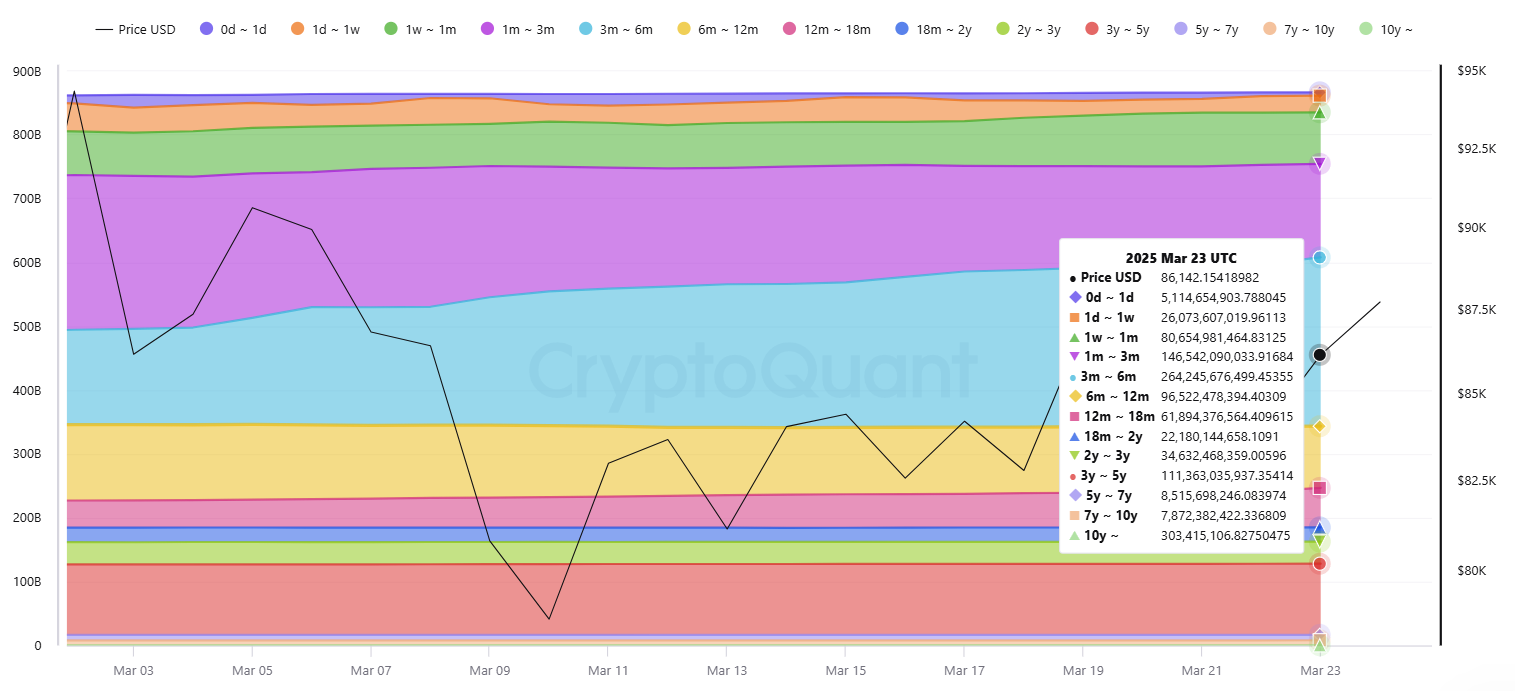Bitcoin hit a record high of $109,114 on January 20. Rather than sparking optimism for continued gains, the cryptocurrency has instead encountered ongoing selling pressure, with a decline of approximately 20% from that peak at the time of this writing. The past few weeks have seen muted demand, diminishing accumulation, and heightened anxiety among short-term holders.
We have noticed that such corrections are a regular occurrence in Bitcoin’s history, often influenced by changes in liquidity, positioning within the derivatives market, and shifts in investor sentiment. In this analysis, I will explore the current liquidity trends in Bitcoin, activity within the derivatives market, and behaviors among different holder groups to determine if the leading cryptocurrency has reached its peak for this cycle or is simply undergoing a temporary adjustment.
From distribution to potential accumulation
Bitcoin’s market fluctuations are shaped by cycles of accumulation and distribution. A distinct distribution phase was evident in late February 2025, but recent data from the Accumulation/Distribution (A/D) Indicator indicates a strong wave of accumulation, subsequently followed by significant selling pressure in recent weeks.
Following a low in mid-March, the indicator is now on the rise once again, suggesting that accumulation might be starting anew. Historically, such rebounds in the A/D Indicator have often signaled forthcoming periods of price stabilization or recovery. However, whether this marks the onset of a lasting accumulation phase or merely a brief recovery remains unclear.
This trend is further supported by a reported 19.9% decrease in spot trading volumes on centralized exchanges, alongside a 20.9% drop in derivatives trading volumes. Additionally, open interest on derivatives exchanges has fallen by 29.8%, marking the lowest level since November 2024.
The situation worsened following the Bybit hack, which resulted in a $1.4 billion loss, intensifying sell pressure and making accumulation less appealing amid increasing liquidity concerns and market uncertainty.
Contracting liquidity limits Bitcoin’s upside
The ongoing contraction of liquidity, which is commonplace during market corrections, is one of the primary reasons for Bitcoin’s challenges in achieving new highs. Data shows that net capital inflows into Bitcoin have plateaued, with the Realized Cap growing at a meager +0.67% per month. This lack of fresh capital influx inhibits price appreciation.
Moreover, Hot Supply—a significant indicator of trading liquidity—has plummeted from 5.9% to 2.8%, representing a decline of over 50%. Exchange inflows have also decreased by 54%, further suggesting a slowdown in trading activities and weakening demand-side pressure.
In the derivatives space, interest in Bitcoin futures has dropped from a peak of $57 billion to $37 billion (-35%), indicating a waning interest in speculation and hedging.
Recent data shows that short-term holder losses over a 30-day period have reached $7 billion, marking the largest sustained loss-taking event of the current cycle, although it remains less severe than the losses observed during the May 2021 crash and the 2022 bear market.
UTXO age data reveals strong holder conviction
Metrics tracking the value of Bitcoin by the age of coins (Realized Cap – UTXO Age Bands) indicate that a substantial portion of Bitcoin’s realized cap is held by long-term investors.

A breakdown of realized cap by age groups as of March 23, 2025, reveals the following:
- 0–1 day: $5.1 billion
- 1 day–1 week: $26.1 billion
- 1 week–1 month: $80.7 billion
- 1–3 months: $146.5 billion
- 3–6 months: $264.2 billion
- 6–12 months: $96.5 billion
- 12–18 months: $61.9 billion
- 18 months–2 years: $22.2 billion
- 2–3 years: $34.6 billion
- 3–5 years: $111.4 billion
- 5–7 years: $8.5 billion
- 7–10 years: $7.9 billion
- Over 10 years: $303.4 billion
We note that UTXOs under one week comprise $31.2 billion, reflecting only 2.7% of the total realized cap. This suggests that although there is some short-term trading activity, it is not the primary influence on the market. The low proportion of recently moved coins indicates that many recent buyers are still holding, with numerous participants not capitulating.
Conversely, the 3–6 month cohort now constitutes the largest share of Bitcoin’s realized cap at $264.2 billion. This group has largely remained inactive amid the latest price fluctuations, reinforcing confidence among long-term holders.
Moreover, Bitcoin held for over 10 years constitutes $303.4 billion, representing the highest realized value across all age brackets.
Overall, the current UTXO age distribution lends support to a bullish accumulation viewpoint, showing that long-term holders are steadfast, speculative flipping is minimal, and the supply is tightening—conditions that have historically led to substantial price recoveries.
ETF flows and market impact
Recent data on ETFs from March 5-21, 2025, presents a mixed picture, with certain ETFs witnessing strong inflows while others face significant outflows. This suggests that while Bitcoin’s price remains under pressure, enduring institutional interest is providing a buffer for market sentiment.
- IBIT (BlackRock’s Bitcoin ETF) saw inflows totaling 39,774 BTC.
- FBTC (Fidelity’s Bitcoin ETF) recorded an inflow of 11,392 BTC.
- ARKB (Ark Invest’s Bitcoin ETF) gained 2,021 BTC, while BTCO (Invesco’s Bitcoin ETF) netted 2,678 BTC.
- GBTC (Grayscale’s Bitcoin Trust) continued to experience outflows of 22,526 BTC.
- Overall, Bitcoin ETFs collectively added 36,138 BTC during this period, highlighting ongoing institutional demand.
Closing thoughts
Bitcoin is currently maneuvering through a multifaceted post-ATH landscape, grappling with a combination of short-term challenges and underlying long-term strengths. The contraction of liquidity is evident in both spot and derivatives markets as capital inflows decelerate and speculative activities dwindle. Nevertheless, signs of accumulating interest are reemerging, UTXO age data reflects robust conviction among long-term holders with low short-term selling pressures, and institutional flows, despite ongoing volatility, continue to show support for Bitcoin, as indicated by net inflows in several notable ETFs. While selling pressures are ongoing, these fundamental dynamics suggest that the prevailing phase may represent healthy consolidation rather than the conclusion of the ongoing bull cycle.
Disclosure: This article serves informational purposes only and does not constitute investment advice.
